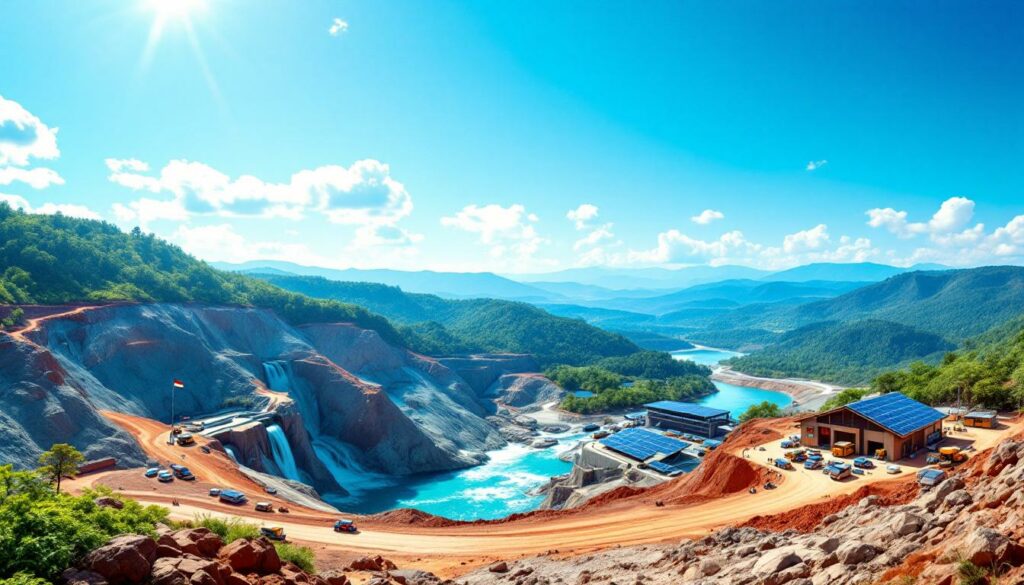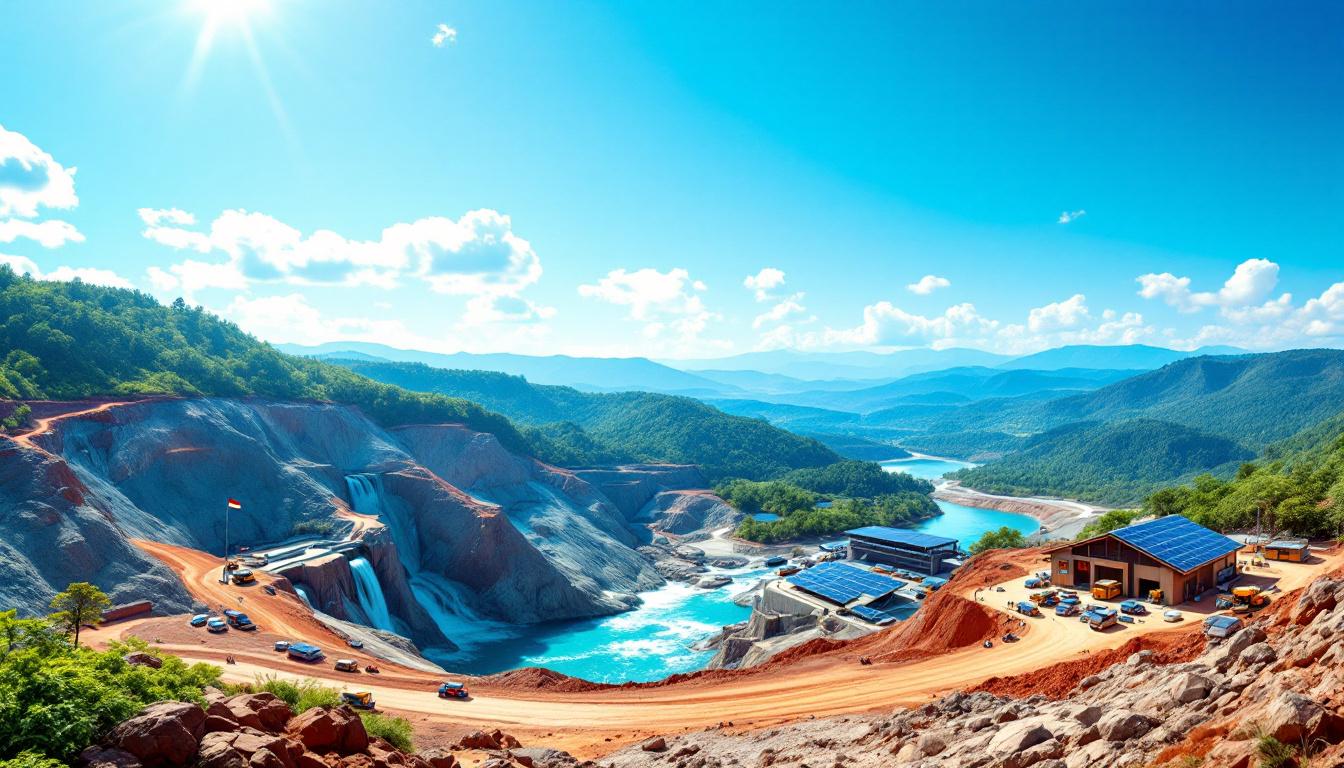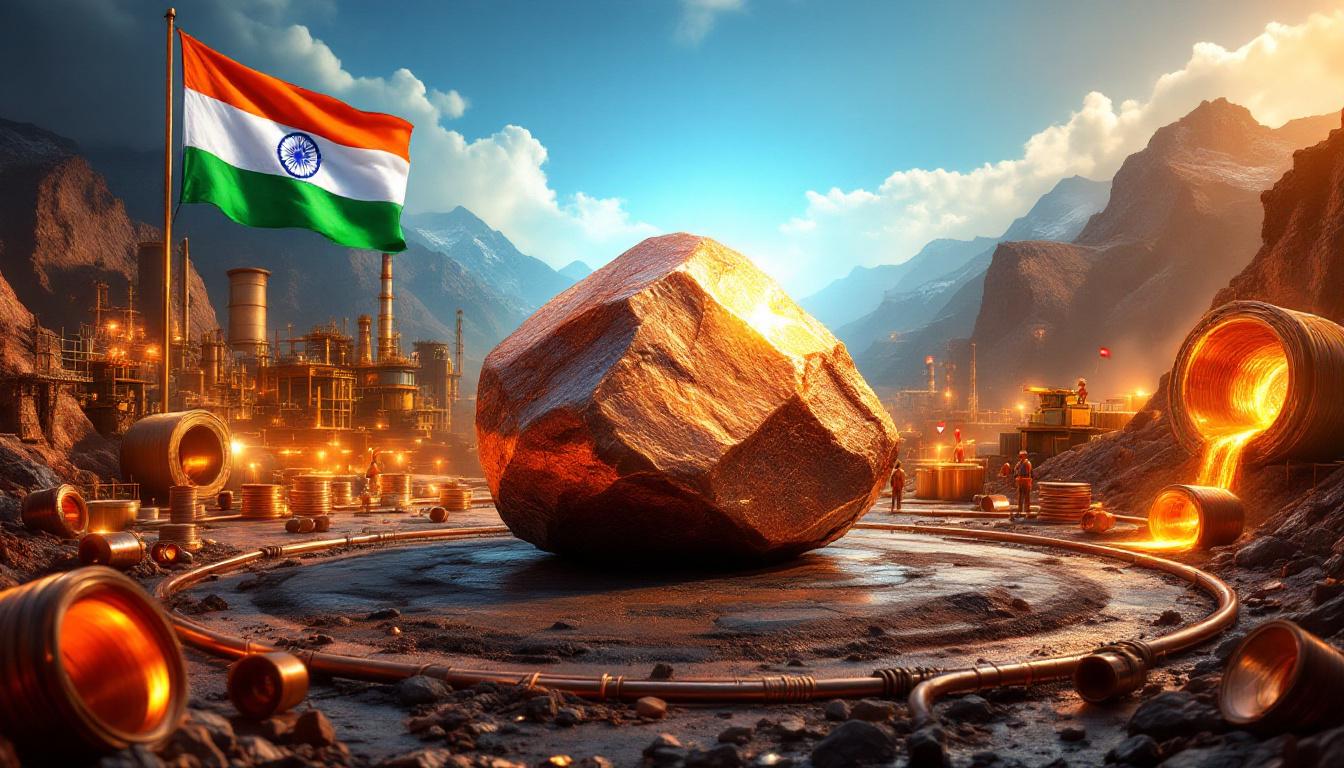What is DRC Mining Week and Why Does it Matter?
DRC Mining Week has established itself as one of Africa's premier mining events, celebrating its 20th edition in 2025 with remarkable growth in both scope and influence. Attracting over 5,000 attendees from more than 50 countries, this annual gathering in the Democratic Republic of Congo serves as a crucial platform for addressing the mining sector's most pressing challenges, with sustainable energy solutions taking center stage in recent years.
As Martin Sondoyi Kasemuka of Copperbelt Energy Corporation (CEC) DRC notes, "DRC Mining Week is the nexus for solving Africa's mining energy challenges through cross-sector collaboration" (Mining Review Africa, June 25, 2025). This perspective highlights the event's transformation from a simple industry showcase to a catalyst for regional development.
The event's importance is underscored by its attendee profile—75% of participants are decision-makers, including mining executives, government officials, and international investors (Event Organizer Data, 2025). This concentration of influence creates a unique environment where partnerships form and policies evolve.
The Strategic Importance of DRC Mining Week
DRC Mining Week's structure reflects its strategic role in the region's mining ecosystem. Beyond traditional exhibitions, the event features specialized tech expos, government-private sector roundtables, and innovation awards with particular focus on ESG compliance and sustainability metrics.
The event facilitates critical connections between mining operations and energy providers, creating a marketplace for solutions to one of the industry's most significant operational challenges. Companies like CEC use the platform to showcase how their grid technologies can support mining operations in remote and challenging environments.
For international technology providers, DRC Mining Week offers direct access to decision-makers in one of the world's most mineral-rich yet infrastructurally challenged regions. The 2025 Kolwezi solar project announcement—a partnership between multiple stakeholders—exemplifies how the event catalyzes sustainable mining innovation that might otherwise face years of negotiation.
Perhaps most significantly, the event highlights government initiatives supporting mining sector development, with the DRC Ministry of Mines using the 2025 platform to announce streamlined permitting processes for renewable energy projects serving mining operations.
How is Energy Shaping the Future of Mining in the DRC?
The DRC mining sector faces unique energy challenges that require specialized solutions. With vast mineral resources but limited power infrastructure, mining companies are increasingly seeking sustainable and reliable energy alternatives that can support both operational efficiency and sustainability goals.
Energy represents a disproportionate operational burden for DRC mines, consuming 25-40% of operational budgets according to World Bank data (2024). This high cost structure has transformed energy from a utility consideration to a strategic priority for mining companies operating in the region.
"Mines now prioritize renewables not just for cost, but for license-to-operate security," explains Kasemuka (Mining Review Africa, 2025). This shift represents a fundamental change in mining companies' approach to energy—from a necessary expense to a competitive advantage and risk-mitigation strategy.
Current Energy Landscape in DRC Mining
The contrast between DRC's mineral wealth and energy poverty creates a paradoxical operating environment. Only 21% of DRC's population has electricity access (IEA, 2024), forcing mines to become self-sufficient energy producers rather than grid consumers. This self-generation requirement adds layers of complexity to mining operations.
Grid instability in the region has created a patchwork of energy solutions across mining operations. Currently, mines rely primarily on diesel (48%) and hydroelectric power (32%), with solar hybrid systems growing at an impressive 18% year-over-year rate (CRU Group, 2024). This diversification trend reflects both necessity and strategic adaptation.
Approximately 70% of mining operations experience power shortages affecting productivity, with unplanned outages causing millions in lost production annually. These disruptions have catalyzed investment in more reliable and flexible energy systems.
The 2024 fuel price volatility documented by the DRC Energy Regulatory Authority has accelerated the transition away from diesel dependency. Mines located in energy-deficient regions (mapped by UNEP in 2025) face the greatest pressure to innovate energy solutions.
Ivanhoe Mines' Kamoa-Kakula operation provides a compelling case study, having implemented a hydro-solar hybrid system in 2024 that cut diesel use by 70% (Ivanhoe Mines Sustainability Report, 2024). This achievement demonstrates that electrification & decarbonisation is not only environmentally beneficial but economically viable in the DRC context.
What Sustainable Energy Solutions Are Transforming DRC Mining?
The evolution of energy solutions in DRC mining has accelerated dramatically, driven by the dual pressures of operational costs and sustainability commitments. Mining companies are increasingly adopting innovative approaches that leverage the region's natural resources while overcoming its infrastructure limitations.
Solar-diesel hybrid systems have emerged as a particularly effective solution, reducing operational expenses by 30% and emissions by 45% compared to diesel-only generation (IRENA, 2025). These systems provide a practical bridge between conventional and renewable energy, offering immediate benefits while allowing for incremental transitions.
When comparing energy options in the DRC context, hydroelectric power typically delivers the lowest Levelized Cost of Energy (LCOE) at $0.05-0.08/kWh for large installations, while solar hybrid systems average $0.10-0.14/kWh—both significantly below the $0.28-0.35/kWh cost of diesel generation (African Development Bank, 2024).
Hybrid Power Systems
The integration of solar, hydroelectric, and traditional power sources has revolutionized energy management at DRC mines. These hybrid systems employ advanced control technologies to optimize each energy source based on availability, cost, and demand profiles.
According to Kasemuka, "CEC's grid modernization allows mines to integrate renewables without compromising reliability" (Mining Review Africa, 2025). This integration capability is critical for operations that cannot tolerate power interruptions during ore processing.
Smart grid technologies enabling efficient energy distribution have seen widespread deployment, with AI-driven predictive maintenance systems (like those developed by Siemens) reducing unplanned downtime by 47% at pilot sites. These systems use machine learning algorithms to forecast load patterns and optimize resource allocation in real-time.
Battery storage deployments have grown 200% in Congolese mines since 2023 (BloombergNEF, 2025), providing crucial backup during outages and enabling higher renewable energy penetration. Lithium-ion installations with 4-8 hour duration capabilities have become standard for mining operations, though some sites are exploring flow battery technology for longer-duration storage needs.
Glencore's KCC mine exemplifies this integrated approach, using CEC's upgraded grid connection combined with on-site solar generation to achieve a 50% renewable energy mix (Glencore Annual Report, 2024). This hybrid model represents the emerging best practice for large-scale mines electrification trends in the region.
Hydroelectric Power Innovations
The DRC's abundant water resources make hydroelectric power particularly attractive for mining operations. Innovations in this sector have focused on making hydropower more accessible to mines in diverse geographical contexts.
Micro-hydro installations (≤10MW) now power 15 remote mining operations, utilizing river tributaries rather than requiring major dam construction (DRC Energy Ministry, 2024). These smaller-scale projects can be deployed in 12-18 months versus 5+ years for conventional hydropower, making them practical solutions for existing mines.
Partnerships with national utility providers to upgrade distribution networks have enabled mines to access existing hydropower resources more reliably. CEC has pioneered this approach with its cross-border infrastructure connecting Zambia's more developed grid to DRC mining operations.
Cross-border power supply agreements have enhanced regional energy security, with the Southern African Power Pool (SAPP) facilitating electricity trading that benefits mining operations. These arrangements provide crucial backup for mines during seasonal hydropower fluctuations.
Long-term power purchase agreements (PPAs) have become standard practice, typically spanning 15-25 years and providing the financial stability needed for infrastructure development. These agreements increasingly include clauses for gradual increases in renewable energy percentages over time.
Who Are the Key Energy Solution Providers at DRC Mining Week?
The energy solution landscape at DRC Mining Week reflects the specialized expertise required to operate in one of Africa's most challenging yet resource-rich environments. Providers range from established regional utilities to innovative technology companies, all competing to address the mining industry's substantial power needs.
At the 2025 event, energy providers showcased increasingly sophisticated solutions that leverage renewable resources, smart grid technologies, and innovative financing models. Their offerings highlight the sector's rapid evolution from basic power supply to integrated energy services tailored to mining operations.
Copperbelt Energy Corporation (CEC)
CEC has established itself as the dominant energy provider for DRC mines, supplying 85% of the sector's power through its Zambia-DRC interconnectors (CEC Annual Report, 2024). The company's cross-border infrastructure has created an energy lifeline for mining operations that would otherwise struggle with reliable power access.
"Our cross-border infrastructure is a blueprint for pan-African energy resilience," states Kasemuka of CEC DRC (Mining Review Africa, 2025). This approach has proven particularly valuable in a region where national grid infrastructure remains underdeveloped.
CEC provides specialized electricity supply solutions that address the unique requirements of mining operations, including voltage stability for sensitive processing equipment and power quality management. The company's technical expertise extends to designing systems that can handle the variable loads characteristic of mining activities.
The company implements sustainable power distribution networks that minimize losses—a critical factor in a region where transmission losses exceed 40% in remote areas (African Development Bank, 2024). CEC's grid reliability stands at 94.5% uptime compared to the national average of 67% (Copperbelt Energy Corporation, 2024), making it a preferred partner for mining companies that cannot tolerate interruptions.
CEC's smart grid uses IoT sensors for real-time fault detection and predictive maintenance (CEC Technology Whitepaper, 2024), enabling rapid response to potential issues before they cause outages. This technology-forward approach has set new standards for grid management in challenging environments.
Other Notable Energy Solution Providers
International renewable energy developers have made significant inroads at DRC Mining Week, with companies like Scatec showcasing their capabilities. Scatec's 60MW solar plant for Tenke Fungurume Mine (operational Q1 2025) represents one of the largest mining-focused solar installations in Africa (Mining Review, January 2025).
Local power distribution specialists with regional expertise, such as Elba Afrika, have carved out important niches. Elba Afrika's microgrid solutions specifically designed for smaller mining operations have gained traction, offering scalable systems that can grow alongside mine development.
Energy storage technology companies have become increasingly prominent, addressing the intermittency challenges inherent to renewable energy sources. Firms like Wartsila have showcased integrated storage solutions specifically engineered for the harsh operating conditions of DRC mine sites.
Energy efficiency consultants represent another important category, helping mines optimize consumption patterns. Companies specializing in compressed air systems, pumping operations, and ventilation—all major energy consumers in mining—have demonstrated how optimization can deliver 15-30% energy savings with minimal capital investment.
What Challenges Must Energy Providers Overcome in the DRC?
Energy providers operating in the DRC face a complex set of challenges that extend beyond typical power generation and distribution issues. These obstacles require innovative approaches and specialized expertise to overcome, particularly when serving demanding clients like mining operations.
The combination of difficult terrain, regulatory uncertainty, and limited existing infrastructure creates a uniquely challenging operating environment. Yet these same challenges have driven remarkable innovation as companies develop tailored solutions for the DRC context.
Infrastructure Limitations
Aging transmission networks requiring significant upgrades represent perhaps the most fundamental challenge. Much of the DRC's existing grid infrastructure dates from the colonial era, with minimal investment in maintenance or expansion over recent decades. This deterioration results in transmission losses exceeding 40% in remote areas (African Development Bank, 2024).
Remote mine locations necessitate innovative distribution solutions, often requiring energy providers to construct dedicated transmission lines spanning difficult terrain. The terrain challenge is substantial—60% of mine sites lack adequate road access for equipment transport (World Bank Logistics Report, 2024), complicating both construction and maintenance.
Limited existing capacity to meet growing demand creates a constant supply-demand imbalance. The disparity between the DRC's vast hydroelectric potential (estimated at 100,000 MW) and its installed capacity (under 3,000 MW) illustrates the scale of the development gap.
The need for substantial capital investment in energy infrastructure presents a financial hurdle, with grid extension costs averaging $25,000-40,000 per kilometer in challenging terrain. This investment requirement often exceeds what individual mining operations can justify, necessitating consortia approaches to infrastructure development.
The 2023 delays in the Inga III hydropower project increased mine diesel dependency by 34% (S&P Global, 2024), highlighting how vulnerable mining operations remain to infrastructure development timelines. These delays demonstrate the risks inherent in relying on large-scale projects in challenging regulatory environments.
Regulatory and Policy Considerations
Evolving energy sector regulations create a moving target for project developers. Regulatory approval delays average 18 months for energy projects (DRC Investment Climate Report, 2025), introducing significant uncertainty into development timelines and financial planning.
Requirements for local content and partnership structures add complexity to project development. Energy providers must navigate local ownership requirements and partnership mandates that can significantly impact project economics and management structures.
Environmental compliance standards are becoming increasingly stringent, with new regulations on watershed management particularly affecting hydropower development. These standards, while important for sustainability, add layers of assessment and mitigation requirements to project timelines.
Government initiatives to promote renewable energy adoption have created both opportunities and challenges. While incentives exist for clean energy development, implementation mechanisms often lack clarity, creating uncertainty for investors and developers.
"The regulatory framework is evolving positively, but predictability remains the biggest challenge for energy infrastructure investments in the DRC," notes a 2025 assessment from the International Energy Agency. "Companies that succeed typically invest heavily in government relations and regulatory affairs capacity."
How Are Mines Benefiting from New Energy Solutions?
The adoption of innovative energy solutions is transforming mining operations across the DRC, delivering benefits that extend far beyond simple cost reduction. These new approaches to power generation and management are reshaping operational models and creating competitive advantages for early adopters.
Mines implementing sustainable energy solutions report multifaceted benefits, from operational improvements to enhanced community relations and investor appeal. The data increasingly shows that energy innovation delivers measurable returns across multiple dimensions of mining operations.
Operational Improvements
Enhanced production reliability through consistent power supply represents perhaps the most immediate benefit. Mines with hybrid energy systems report 22% less downtime compared to those relying solely on grid or diesel generation (WEF Mining & Metals Report, 2025). This reliability translates directly into production volumes and revenue stability.
"Battery buffering lets mines maintain production during grid outages," explains Kasemuka (Mining Review Africa, 2025), highlighting how energy storage technologies provide crucial operational continuity. These battery systems enable seamless transitions between power sources, protecting sensitive processing equipment from damaging power fluctuations.
Renewable energy integration has demonstrably reduced long-term energy costs, with mines reporting average savings of $0.12/kWh compared to diesel generation (McKinsey, 2025). While capital expenditure requirements remain significant, payback periods have shortened considerably—solar installations typically achieve ROI within 4-6 years, while hydro projects range from 7-12 years depending on scale and site conditions.
Improved environmental performance and sustainability metrics have become increasingly important as mining companies face pressure from investors, regulators, and customers. Carbon reduction achievements now feature prominently in corporate reporting and ESG scorecards, with energy innovations providing quantifiable decarbonisation benefits.
Case Studies: Successful Energy Transformations
CMOC's Tenke Fungurume Mine (TFM) provides a compelling example of successful energy transformation. After deploying solar generation, the operation reduced carbon intensity by 180,000 tCO2/year (CMOC Sustainability Report, 2024). This reduction not only improved the operation's environmental footprint but also positioned its products favorably with downstream customers increasingly concerned about supply chain emissions.
Major copper producers implementing solar-diesel hybrid systems have reported 15-20% reductions in overall energy costs within the first year of operation. These hybrid systems typically involve 10-20MW solar installations paired with advanced control systems that optimize diesel generator operation to provide only necessary backup capacity.
Cobalt operations utilizing hydroelectric power through PPAs have achieved both cost stability and emissions reductions. These long-term agreements, typically spanning 15-25 years, provide crucial predictability for operations planning while insulating mines from fuel price volatility.
Battery metals processors investing in energy efficiency technologies have focused on high-impact areas like grinding circuits, which can consume up to 40% of a processing plant's energy. Advanced control systems and equipment upgrades have delivered 10-15% efficiency improvements in these energy-intensive processes.
New mining developments incorporating renewable energy from inception show the strongest results. Projects designed around renewable energy availability from the start can optimize site layout, processing technology selection, and production scheduling to maximize renewable utilization—achieving renewable percentages of 60-70% compared to 30-40% for retrofitted operations.
What Future Energy Trends Were Highlighted at DRC Mining Week?
DRC Mining Week 2025 showcased emerging energy technologies and approaches that promise to further transform mining operations in the coming years.
Ready to Spot the Next Major Mineral Discovery?
Discover how to gain immediate alerts on significant ASX mineral discoveries with Discovery Alert's proprietary Discovery IQ model, transforming complex data into actionable investment insights. Learn why historic discoveries can generate substantial returns by visiting Discovery Alert's dedicated discoveries page and begin your 30-day free trial today to position yourself ahead of the market.




